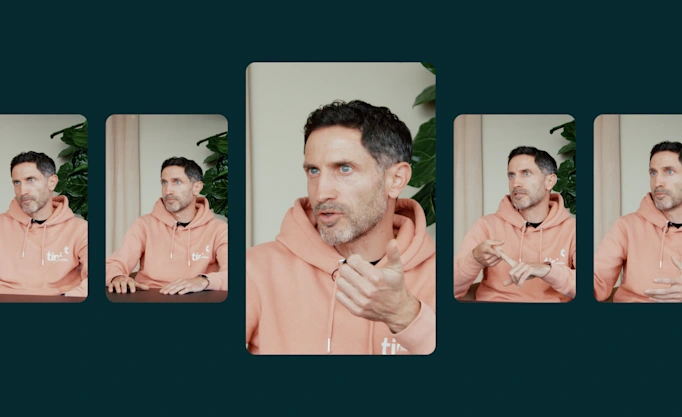How to build customer trust and loyalty through better PFM experiences

Winning the customer of the future will require a level of personalisation and insight that doesn’t currently exist in banking. But it’s coming – and we’re building the platform that will deliver it. Our PFM solutions use machine learning to offer tailored, actionable advice that guides customers to the financial future they envision – and creates long-term relationships.
Not long ago, bankers and customers had a relationship that spanned through decades, persisting through moves, marriages, children, divorces, job changes, retirement. Digital has largely erased that, and smartphones have replaced that connection. And that’s a good thing – if customers want a better experience, they can easily jump to a new service that offers it.
Personal finance management (PFM) services are a great example. They analyse users’ financial data to offer insights that help them better understand and manage their money. And with the open banking technology available today, they can pull all of a customer’s accounts into one multi-banking app, where they can do everything they would normally do through a bank – like pay bills, make transfers, save money.
All of this is great for consumers but it’s erasing the banks’ competitive advantage. The technology is out there, allowing any player to offer these services – bank or not. So when everyone can offer the same product, how can banks differentiate themselves and win back customer loyalty?
Making PFM experiences personal and actionable
People are still people – they want personalised services, and relevant advice that guides them to their financial goals. And they want to feel that whomever (or whatever) is providing it is acting in their best interests.
But most PFM apps available today don’t really do that. They look back instead of forward. They give summaries instead of projections. And they offer static advice based only on financial behaviour.
The PFM of the future – the one we’ve been developing – offers advice that’s personal, predictive and, most importantly, actionable. It gives actionable insights – bite-sized insights powered by algorithms that continually learn from a wealth of financial data, user preferences and recurring behaviour to help people optimise their finances, one step at a time.
When you can steer your customers to better financial health with advice and insights that are tailored to their unique situation, your offer will have something that no one else’s has – the human touch.
There are a lot of PFM services out there, but you need one that creates long-term relationships with your customers – and makes them feel understood. Here’s how you can to that:
Step one: find out what customers find relevant
Start off by building a relationship and getting to know your customer better. You can do this by asking a few questions. In the beginning, they’re simple: ‘this insurance bill you just paid – was this for your car or home?’

They might not answer every question, but they’ll engage with the questions they feel are relevant – creating a gratification loop that primes them to respond to the insights you offer next time. This relevance is what builds trust in the service over time – and allows you to deepen the relationship.
But these small questions will also create a valuable feedback loop for you. By seeing what questions they are engaging with the most, you can better understand what each user cares about most. Every action – or lack of it – providing input on their preferences.
While financial behaviour is a starting point, how the user interacts with the product will give a lot of insight into what’s relevant for each particular person. This kind of data can help create a solid profile of each user so the feed is adapted to them – resulting in relevant, personalised advice.

Step two: see the broader picture to give personalised advice
Simple PFM apps can see if a user is keeping money in a savings account with no interest, and guide them to a better investment. But the future of PFM that we envision is using a machine-learning algorithm that works continually to understand a customer’s broader financial picture – and offer advice that is tailored specifically to them.
Say they want to buy a holiday house. Instead of helping them reach this goal in a set period of time and socking away money each month, we can analyse their spending, how successful they’ve been meeting their goals in the past, and how much money they have left each month. Then we can determine if their goal is realistic – and make it clear what steps they need to take to achieve it.

Like having a coach, actionable insights will be able to draw conclusions and offer advice that truly reflects the customer. And we can do this because we have their full financial picture with aggregation. When they enroll through a bank’s app, they should feel confident that it will tell them what will happen going forward, guide them in the right direction – and give them the means to do something about it.
Step three: create a strong bond based on trust
Building trust through small, steady actions and following that up with concrete advice that’s highly individual will result in a relationship – and one that’s much closer than the traditional bank-customer one. What customers get is a financial advisor that they truly appreciate.

A relationship like that makes them more likely to use not just your PFM tool, but the financial services you offer. Because the connection you have will be personal. Think about it like a relationship with a therapist – when so much time has been invested and information shared, you stay because you get honest and trustworthy advice that puts you on a better path.
With more customer trust, you can even put some actionable insights on autopilot. Once you really know your customers, you can automatically set up budgets and notify them. Or you can auto-generate low-balance warnings based on past behaviour rather than asking them to set it. You’ll be improving their financial health on autopilot too – imparting the feeling that your advice is even better and more personal than it was yesterday.
Next steps?
As it becomes easier and easier for customers to switch banking services, it’s vital to offer the best advice and the best experience to keep winning business – and to hold onto it.
The future of PFM is around the corner. We’re building it. And it will only keep improving with time. If you’d like to learn more about the next generation of PFM features we’re developing and how your business can use it to transform the relationship with customers – reach out.
More in Open banking

2025-11-20
3 min read
Tink powers the UK’s first cVRP transaction with Visa A2A
In partnership with Visa, Kroo Bank, and Utilita, we’ve just helped demonstrate the UK’s first commercial variable recurring payment (cVRP) using the Visa A2A solution – and it’s a big step forward for how people make regular payments.
Read more

2025-06-09
11 min read
The case for “Pay by Bank” as a global term
Thomas Gmelch argues that "Pay by Bank" should be adopted as a standard term for open banking-powered account-to-account payments to reduce confusion, build trust, and boost adoption across the industry.
Read more

2025-06-02
3 min read
Tink joins Visa A2A – what it means for Pay by Bank and VRP
Visa A2A brings an enhanced framework to Pay by Bank and variable recurring payments (VRP) in the UK, and Tink is excited to be one of the first members of this new solution.
Read more
Get started with Tink
Contact our team to learn more about what we can help you build – or create an account to get started right away.
